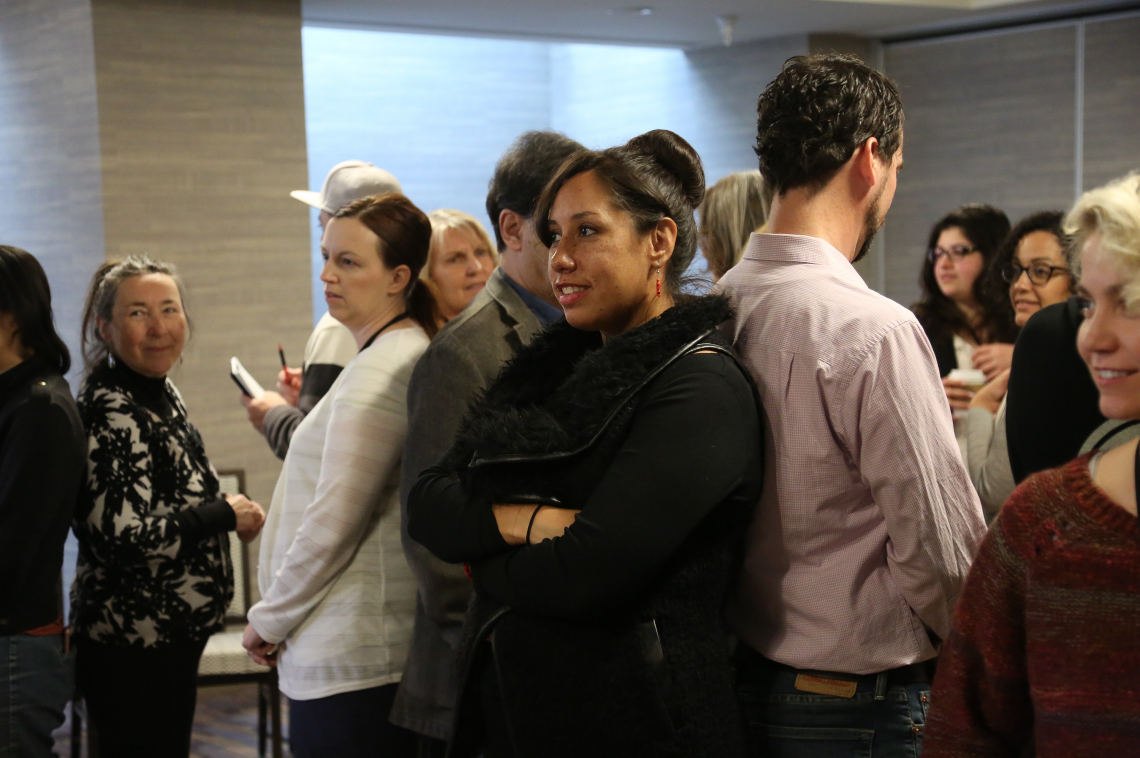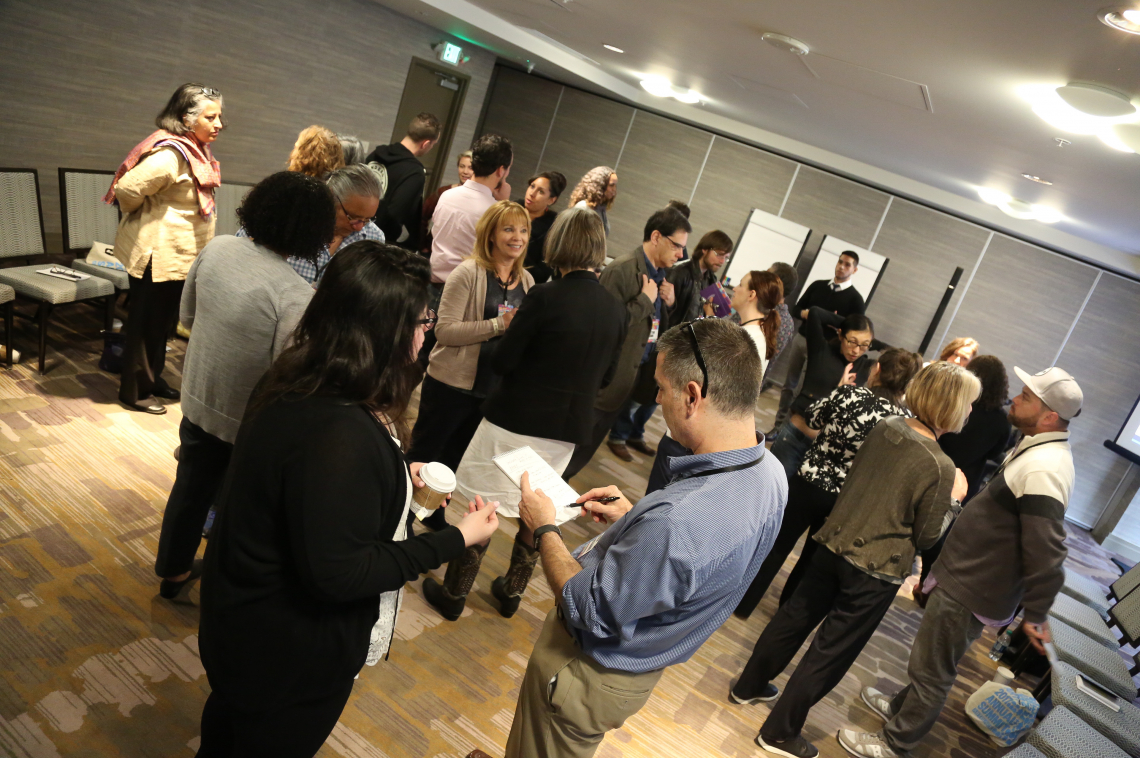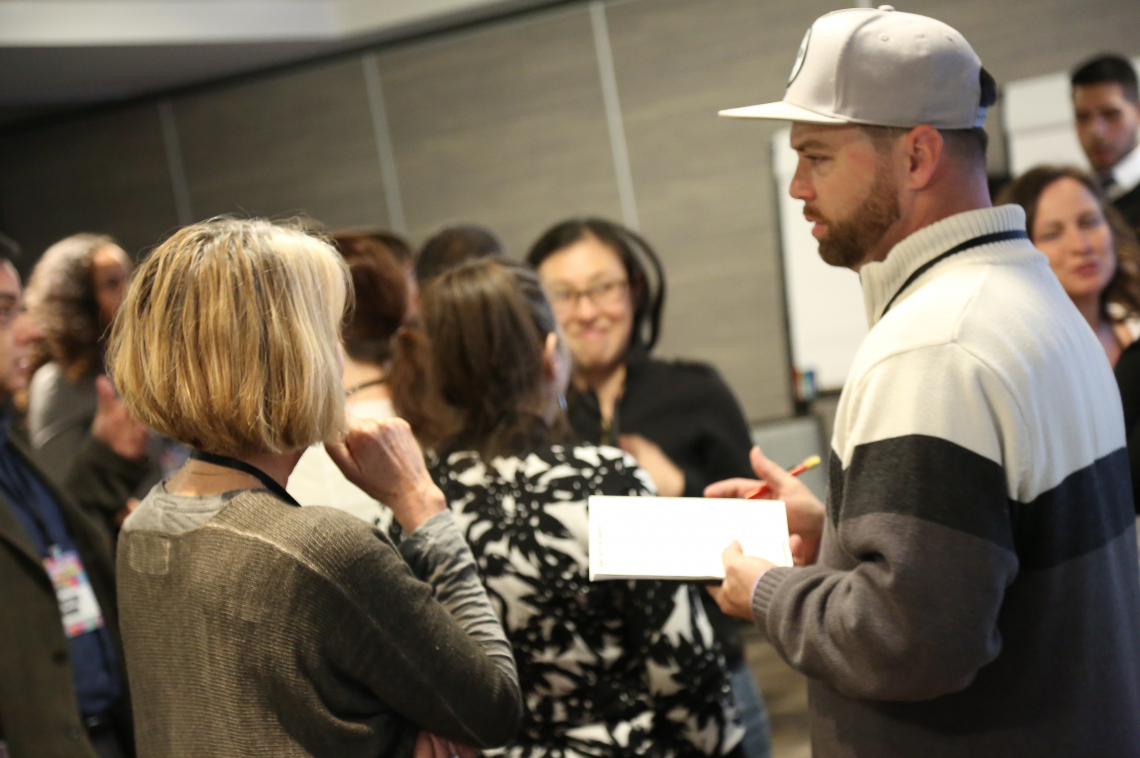


On the third day of the conference, or was it the second? No, it was the third. See already this story is a bit bumpy. But that’s the nature of story telling, it’s not always a straight line and not always easy and almost always reveals itself after a couple of tries.
We all use storytelling in our lives, whether we notice it or not. Each tweet, each posted update or photo tells a story of our daily lives. For example, if you took a look at my story you’d notice my love of books, desserts, and art.
But why is storytelling important? How can it help, say, an organization acquire funding? How can it help a project at all?
For the last eleven years, Luis Ortega (Storytellers for Change) has worked with organizations, school districts, foundations, and universities to help them apply a story-centered approach to tackle complex social challenges. And that’s just what he did at the ArtPlace Summit.
Luis started off the breakout by challenging us to listen as he gave us sets of instructions like “place your right hand in the air while holding out the left to the person next to you,” and so on. Here I learned that I always translate left and right into Spanish before doing something which made me lag behind everyone else! We followed this by splitting up groups of two. At this point he asked ask us to speak about a problem we had and how we needed to overcome it in just under one minute.
I’ll pause here for you to think about this – how often are we asked to succinctly describe an issue in under one minute? If you’ve ever spoken to someone about your project or written a short paragraph in a funding application you know the difficulties of fitting everything in such a short period of time! In the next round we switched partners and were given a minute and a half to tell the same story, then again with two minutes. At the end my problem, which I’d had difficulty describing at the beginning was now crystal clear. It is a similar process I go through when editing my novels. When I begin I’m a bit all over the place and not sure what I need to say, but after each pass my words are sharper.
“We are all storytellers. To be a human is to be a storyteller,” Luis said, but not all stories are the same, not all stories achieve their desired effect. In order for them to do so, you need to remember a few things, for example: Know your audience.
Facts, and numbers might be interesting for a potential funder, but perhaps not so much to everyone else, but those facts along with a compelling story, that packs a punch!
These days we are inundated with data, news is at our fingertips, so finding a story that connects and moves people is not always easy, but that’s exactly what you have to do. Stories need to make us STAND UP and take action. To do that they need to be accessible in many levels, intentional in the way you speak, and lets not forget authentic! Lets hear about those bumps along the way, the things that didn’t quite work out. I’d rather hear that George R.R. Martin goes through one hundred drafts before he even likes anything he does because I can connect with that. When we wondered how do we get people to connect, to care, with a project’s story, Luis suggested to: “get in tune with what moves you.”
At the end Luis reminded us that storytelling is an ongoing process, constantly reevaluating what we need and have to say, and we need to give ourselves time to process. You might be a new organization, or one that’s been around for ten years, and wondering how to get more people involved, or how to write that one perfect paragraph for more funding, or how to archive your journey for future generations!
What you are doing is storytelling. What you need is storytelling. So remember to take your time, look at your story, tell it over and over again until it sharpens and grows. Know your audience, and think about what moves you to action, and then go out and share it with the world.
I’ll leave you with these two questions that Luis left us with: What stories are we telling? What stories are we choosing to tell?
You can watch the full video of the presentation below.
View the full powerpoint presentation here.
View the storytelling toolkit here.





